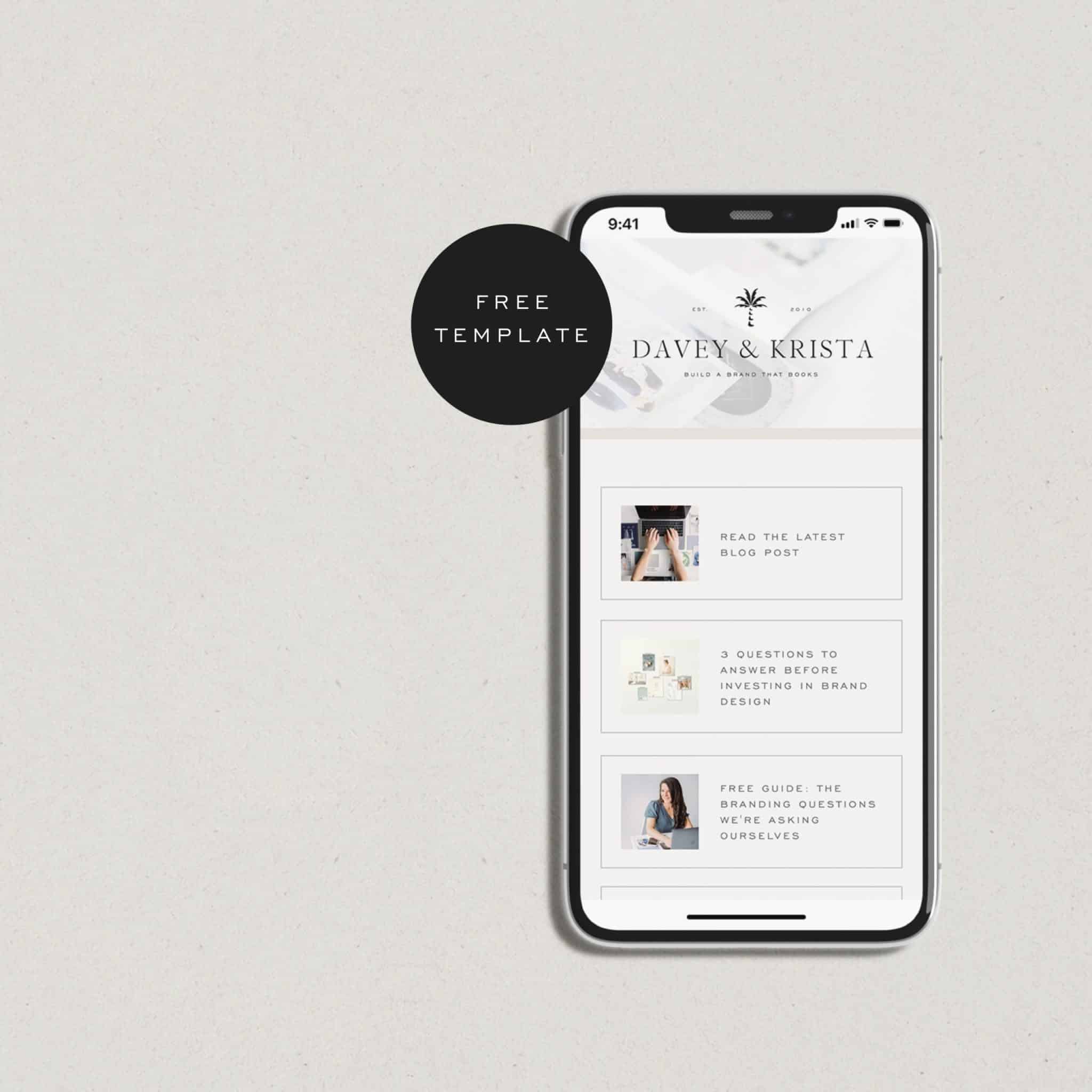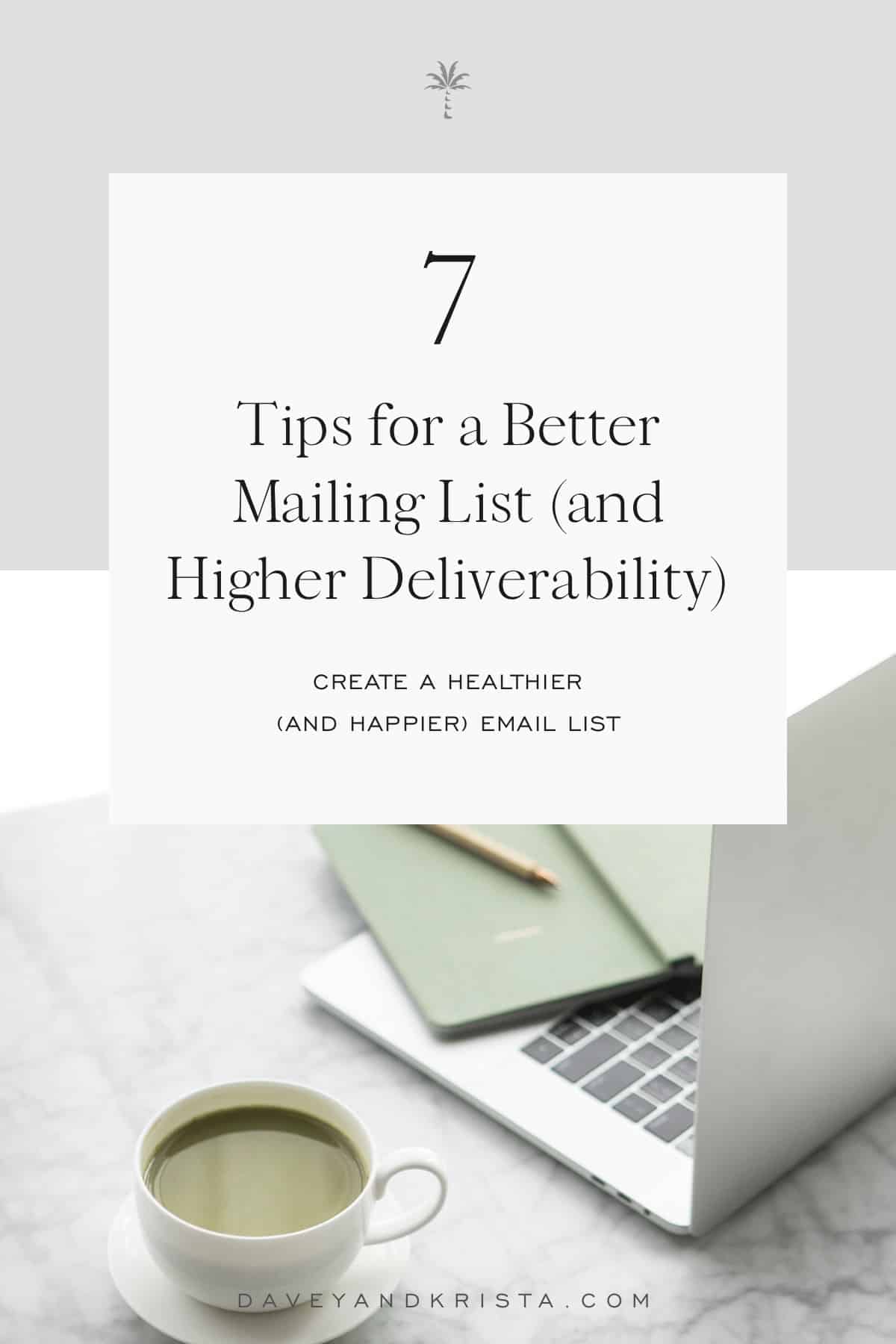We’ve written a lot about mailing lists, and certainly for a good reason, since a well-built list offers an array of benefits:
- Communicate immediately and directly with people who you know are interested in your content or products.
- It can foster further interaction by driving readers back to your blog, website, or social media.
- It’s a great way to stay at the top of people’s minds.
- Mailing lists can provide valuable metrics that measure people’s responses to products and messages.
- Email marketing is typically one of the higher converting channels for a business.
- And the list goes on…
One of the biggest benefits of email marketing is that we reasonably sure that people are seeing our content. There aren’t the same pesky social media algorithms that might limit the organic reach of a post to a tiny percentage of followers.
But there are algorithms.
Yes, email service providers like Gmail and others have their own algorithms to determine what inbox email lands in. Based on lots of different factors an email service provider determines whether an email should land in the primary inbox, promotions folder (like in Gmail), or spam.
If you have an email list, you likely know how frustrating it can be to hear (or suspect) that you’re landing in someone’s spam. It’s even more frustrating when you start thinking about the cost of that subscriber being on your list—both the cost of things like Facebook ads to get that subscriber in the first place and what you pay your email platform for that subscriber.
Fortunately there are things we can do to make it more likely your email lands in someone’s inbox.
So if you’re thinking about starting a mailing list and want to be sure to focus on deliverability from the start, or if you have a mailing list and you’re hoping to clean things up a bit, this is the post for you.
Don’t have an email list? Here are our two recommended platforms:
What is Email Deliverability?
Email deliverability refers to the likelihood that an email you send lands in the inbox of the person to whom you send it.
One of the first things you should research when choosing an email marketing platform is its deliverability rate. There are things platforms can do to improve deliverability, so you want to make sure that’s a priority for them before committing.
Ensuring high deliverability goes beyond choosing a platform. There are all sorts of other factors ranging from sender reputation to how people interact with your emails to the keywords in your subject lines. For a more thorough look at factors that impact deliverability, check out this post from Moosend.
7 Tips for Higher Email Deliverability
Below we are focusing on tips that will result in a healthier (and happier) email list. Before we get started, we recommend sending emails from a custom domain. In other words, sending emails from @[yourdomain].com instead of @gmail.com or @yahoo.com, etc.
1. Verify Your Domain
Verifying your domain will make it possible to set-up authentication records, which can improve your sender reputation. Basically it’s a way to communicate to email providers like Gmail that you’re legit.
Email platforms will differ in their recommendations on verifying your domain. Kit, for instance, only recommends verifying your domain if you’re sending over 50,000 emails/month and have an open rate of at least 20%. Regardless of what platform you use, it’s probably wise to send them a message prior to verifying to see what they recommend and ensure you’re following the right directions.
This sounds technical, but it’s a fairly easy task to complete. Here are the relevant help articles for our two recommended platforms: Kit and Flodesk.
2. Remove Cold and Invalid Email Addresses
Cold subscribers are typically defined as subscribers who have not opened an email in at least 90 days. This happens for all sorts of reasons. The subscriber might have lost interest or your emails might have found themselves in spam. Regardless, if a subscriber hasn’t opened an email for 90 days, it’s probably time to assess whether you want to keep them on your list. Remember, most email platforms charge you based on how many subscribers you have. Is it worth paying for someone who is no longer opening your emails?
We choose to remove cold subscribers from our list about once a quarter. We know others who simply move the subscribers to a different “cold” segment that receives a specific reengagement campaign and others who never remove anyone from their list. However, “pruning” cold subscribers is typically viewed as an effective way to keep an email list healthy.
Be on the lookout for invalid email addresses. This might be addresses that were mistyped or are no longer receiving emails. Many email platforms will run a report for you that will give you a list of invalid email addresses, which makes it easy to remove them in bulk.
3. Train Subscribers to Click
Even if the bulk of the content is included in the email, encourage subscribers to click a link. We opt to only provide previews of content within emails so that subscribers have to click to read the full post, listen to a podcast, or see the details of a sale or promotion.
We do this for three reasons:
- We’re able to include more content in the email. Since we typically email a podcast episode and blog post on a weekly basis, we can provide a preview of both without writing a super long email.
- It increases the ‘click rate.’ High click rates indicate to email providers that the content is relevant.
- It increases the likelihood of subscribers clicking when you really want them to click—for instance, when you’re running a promotion or sale.
This might not be super important for some email formats or senders, but we’ve found it to be effective in increasing engagement.
4. Be Intentional with Subject Lines
Writing subject lines in all caps, using certain spammy keywords or misleading prefixes like “re:” or “fw:” can land your email in spam. It’s definitely worth taking your time brainstorming subject lines since a well-written subject line can increase open rates.
We love a witty subject line as much as the next person. But what we’ve found with our own emails is that a ‘cutesy’ or ‘clickbait-y’ subject line might result in more opens in the short term, but also tends to result in a lower click-rate and more unsubscribes than more straightforward subject lines.
This, of course, will depend a bit on the brand. Wittier subject lines that don’t necessarily reveal the content might work for you.
Either way, avoid writing subject lines that might catch the attention of a spam filter.
5. Be Consistent.
How often are you sending emails? Engagement and deliverability can both suffer if emails are sent infrequently. By infrequently we mean less than once a week.
Remember, people subscribed to your email list to hear from you. If they don’t want to hear from you anymore, they can unsubscribe. Unsubscribes are totally normal (within reason). And personally, we’d much rather someone unsubscribe than never open an email but remain on our list.
As an aside: It’s important to make it easy for people to unsubscribe from your email list. Each email should have a clear link to do so. If people can’t unsubscribe, expect them to mark you as ‘spam’ which will likely hurt deliverability.
If you’re coming back from an email sending hiatus, it’s probably best to send to your warmest subscribers first before sending to the rest of your list (this is also a good idea if you’re switching email platforms). The longer the hiatus, the smaller the segment you want to send to so that you can monitor open rates and other deliverability metrics.
We typically send one email a week to the majority of our email list in addition to the automated sequences that happen in the background.
6. Get Permission and Reengage Your Audience
Except in specific situations, we typically recommend the “double opt-in” process when collecting e-mails. This is when users sign-up using an online form, then confirm through a confirmation e-mail.
If you’re segmenting your audience, it will be easier to reengage subscribers who start to go cold with content relevant to them. Before removing cold subscribers (see above), we typically try to send content that might reengage them. This really is only possible if tags and segments are being used intentionally.
Note: If you’re just starting your list, remember you always need someone’s permission before adding them to your email list—even if it’s a friend!
7. A/B Test Send Times
Ultimately this is something that will vary from business to business (and can easily be A/B tested!), but have a general sense of what time of day people are most likely to engage with your emails. We’ve found that mid-morning and mid-afternoon (eastern time) Monday through Thursday typically results in higher open and click rates than on Fridays and Saturdays.
Most Importantly: Send Quality Content.
The best email lists offer subscribers something in return for their readership. Even major product lines generally offer discounts or a first-look into a new line of products. Try offering a free e-book, template, or guide for anyone who signs-up. Why? Because it immediately sets the tone by establishing that your business has something to offer. Warning: If what you offer is not quality, expect people to unsubscribe quickly.

Have advice, tip, or a question? Let us know in comments below!

VIEW THE COMMENTS
Add A Comment